 |
Creating Respect and Safety for Paraprofessionals |
1.00 |
Keeping school-age children respectful and safe is a major priority for schools. It requires setting up the classroom environment to promote safety and using effective strategies for monitoring and maintaining a safe environment. Because students are growing towards independence, it is also essential to help keep them safe from harm as they participate in school experiences. |
 |
Course 14: Creating and Maintaining Healthy School-Age Environments |
2.00 |
Keeping school-age children healthy is another major priority for school-age programs. This requires giving careful attention to setting up the environment in a way that promotes healthy habits and using effective strategies for monitoring and maintaining a hygienic environment. Because school-age children are growing towards independence, it is also important to help them develop habits and behaviors for living a healthy life-style.
|
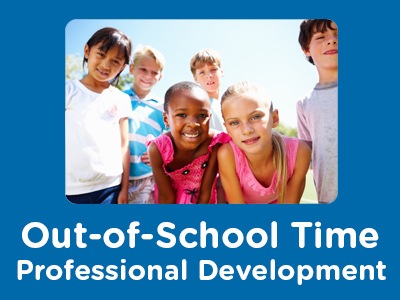 |
Creating and Maintaining Healthy School-Age Environments |
2.00 |
Keeping school-age children healthy is a major priority for school-age programs. This requires giving careful attention to setting up the environment in a way that promotes healthy habits, and using effective strategies for monitoring and maintaining a hygienic environment. Because school-age children are growing towards independence, it is also important to help them develop habits and behaviors for living a healthy life-style. |
 |
Creating and Maintaining Healthy and Safe School Environments |
1.00 |
Keeping school-age children healthy and safe is a major priority for schools. This requires careful attention to setting up the environment to promote healthy habits and using effective strategies for monitoring and maintaining a hygienic environment. It also requires setting up the classroom environment to promote safety and using effective strategies for monitoring and maintaining a safe environment. Because students are growing towards independence, it is also essential to help them develop habits and behaviors for living a healthy lifestyle and to help keep them safe from harm as they participate in school experiences. |
 |
Zoological Record Keeping |
2.00 |
Keeping accurate animal-care records is an important part of zookeeping and a requirement for AZA accreditation and permitting. Standardized information systems that can be transferred and maintained collaboratively between organizations can help you identify health issues, develop sustainable species populations, and address conservation challenges. Using a case study from a zoonotic disease concern at the San Diego Zoo, you will learn the basics of record keeping, including standard abbreviations, animal identification systems, best practices in reporting, and a list of record types every accredited facility should maintain. |
 |
E-Mail Etiquette: Composing Online Correspondence |
1.50 |
It’s important for e-mail messages to be written well because they can determine your company’s success or failure. A poorly written e-mail message could give co-workers and management a bad impression of your own work habits. An effectively written e-mail message, however, is easy to understand, encourages action, and gives others a good impression of your overall job performance. |
 |
Green Practices |
1.00 |
It is said that actions speak louder than words, and that certainly rings true where wildlife and conservation issues are concerned. As a world leader dedicated to the conservation of endangered species and their habitats, San Diego Zoo Global is committed to green practices at the workplace, as well as providing green ideas for friends, members, and supporters to consider. |
 |
AZA Government Affairs: What Happens in DC Doesn't Stay in DC |
1.00 |
It is important for zoo and aquarium professionals to be knowledgeable about the legislative and regulatory activities around them because government actions could impact their work environments and their day-to-day activities. Zoo and aquarium personnel involved in the import, export, breeding, shipment, receipt, sale, transportation, or display of wildlife should be familiar with existing national and international wildlife laws. This webinar will examine some of the key U.S. laws, regulations and governmental processes which affect zoos and aquariums and how these measures directly impact directors, curators and keepers alike. |
 |
Going Deeper: Supporting Social-Emotional Learning and Character Development |
2.00 |
It is important for staff to reflect on the practices they are implementing throughout the program to create environments in which young people can experience social-emotional learning and practice character skills. Just as important, staff must reflect on their own personal social-emotional and character competencies and how they demonstrate those in the program, acting as a role model for program participants. During this course participants will complete a self-reflection tool to identify actions they can take to strengthen their abilities to support social-emotional and character skill development. |
 |
Current Trends and Issues in Out-of-School Time Programs: Needs & Benefits |
0.67 |
It is important for school-age care professionals to understand how the field has developed since its inception, and to be knowledgeable about the current status of the field of school-age care. With this knowledge and understanding, it is possible for school-age care professionals to participate in shaping the field as it grows in the future. In this course, we will explore needs and benefits in out-of-school time programs. |
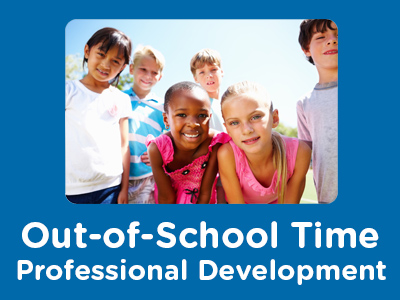 |
Current Trends and Issues in Out-of-School Time Programs: Growth & Change |
0.67 |
It is important for school-age care professionals to understand how the field has developed since its inception, and to be knowledgeable about the current status of the field of school-age care. With this knowledge and understanding, it is possible for school-age care professionals to participate in shaping the field as it grows in the future. In this course, we will explore growth and change in out-of-school time programs. |
 |
Current Trends and Issues in Out-of-School Time Programs: Funding & Support |
0.67 |
It is important for school-age care professionals to understand how the field has developed since its inception, and to be knowledgeable about the current status of the field of school-age care. With this knowledge and understanding, it is possible for school-age care professionals to participate in shaping the field as it grows in the future. In this course, we will explore funding and support issues in out-of-school time programs. |
 |
Current Trends and Issues in Out-of-School Time Programs |
2.00 |
It is important for OST professionals to understand how the field has developed since its inception and to be knowledgeable about the current status of the OST field. With this knowledge and understanding, it is possible for OST professionals to participate in shaping the field as it grows in the future.
The field of OST is growing and changing as national researchers learn more about what works best in OST programs for a wide range of children and youth, their families, and their communities. Other positive changes are occurring as advocates for OST succeed in creating more public awareness about the need to make quality OST services available to all children and youth across the country. In addition, the OST field is undergoing a metamorphosis as experienced professionals in several different disciplines and fields share and contribute their knowledge, skills, and insights with the goal of creating national models that represent the best possible OST programs.
In this climate of change, OST programs face a number of important issues, revolving around the availability, affordability, and accountability of programs. Many national trends and issues have implications for OST at the state and local level. When OST professionals are well informed about national developments in the field, they can become more effective OST advocates as they design and implement high quality, sustainable programs that are responsive to youth, family, and community needs. |
 |
Course 32: Current Trends and Issues in Out-of-School Time Programs |
2.00 |
It is important for OST professionals to understand how the field has developed since its inception and to be knowledgeable about the current status of the OST field. With this knowledge and understanding, it is possible for OST professionals to participate in shaping the field as it grows in the future.
The field of OST is growing and changing as national researchers learn more about what works best in OST programs for a wide range of children and youth, their families, and their communities. Other positive changes are occurring as advocates for OST succeed in creating more public awareness about the need to make quality OST services available to all children and youth across the country. In addition, the OST field is undergoing a metamorphosis as experienced professionals in several different disciplines and fields share and contribute their knowledge, skills, and insights with the goal of creating national models that represent the best possible OST programs.
In this climate of change, OST programs face a number of important issues, revolving around the availability, affordability, and accountability of programs. Many national trends and issues have implications for OST at the state and local level. When OST professionals are well informed about national developments in the field, they can become more effective OST advocates as they design and implement high quality, sustainable programs that are responsive to youth, family, and community needs. |
 |
Current Trends and Issues in Out-of-School Time Programs (Collection) |
2.00 |
It is important for OST professionals to understand how the field has developed since its inception and to be knowledgeable about the current status of the OST field. With this knowledge and understanding, it is possible for OST professionals to participate in shaping the field as it grows in the future.
The field of OST is growing and changing as national researchers learn more about what works best in OST programs for a wide range of children and youth, their families, and their communities. Other positive changes are occurring as advocates for OST succeed in creating more public awareness about the need to make quality OST services available to all children and youth across the country. In addition, the OST field is undergoing a metamorphosis as experienced professionals in several different disciplines and fields share and contribute their knowledge, skills, and insights with the goal of creating national models that represent the best possible OST programs.
In this climate of change, OST programs face a number of important issues, revolving around the availability, affordability, and accountability of programs. Many national trends and issues have implications for OST at the state and local level. When OST professionals are well informed about national developments in the field, they can become more effective OST advocates as they design and implement high quality, sustainable programs that are responsive to youth, family, and community needs. |
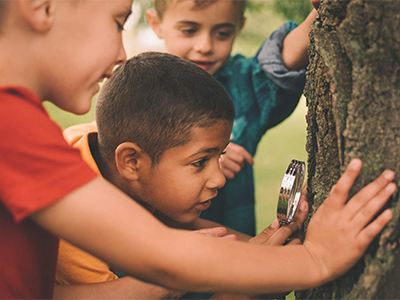 |
Integrating Academics and Enrichment |
2.00 |
It is essential that skills presented during the instructional day are reinforced by the learning opportunities presented in out-of-school time programs. Presenting materials in alternative learning formats encourages children and youth to participate, and it is through this participation that programs help promote mastery. During this course, participants will develop an understanding of the California Content Standards for Public Schools, including the Common Core Standards, and explore how to integrate them into a balanced afterschool program. |
 |
Customer Service: Customer Service Basics |
0.75 |
It is amazing how much time, effort, and money is invested in sales education. However, customer service is not given the same level of resources. If you think about selling as a process, the final phase is not closing the sale, it’s serving the customer. After an effective sales process awards you a new customer, it is customer service that will determine whether your customer stays with you. |
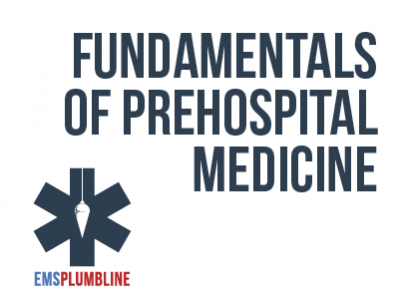 |
Stroke—Overview for BLS Providers |
1.00 |
It is always a benefit to be able to speak with an experienced paramedic and gain their opinions on pre-hospital care. Medical Director, Jeremy Cushman, puts on his paramedic hat and offers opinions on one of the most time sensitive emergencies that we see in the pre-hospital setting. Join us in a discussion that defines Stroke and discusses why recognition, communication, treatment, and transport is so vital to our patients' success. Final Exam: This multiple-choice exam is designed to test your knowledge of the material you just reviewed. You have two attempts to gain an 80% or higher on this exam. Please take your time and answer each question carefully. |
 |
Organizational Communication: Innovation and Change |
1.00 |
Innovation is a new idea or process that can change the way organizations operate or think. For an idea or process to be considered an innovation, the majority of people who hear about it must consider it new. Implementation of an idea is not necessary for it to be considered an innovation.
Innovation and change are closely related. When an innovation is adopted, it becomes a change. On the other hand, not all change is innovation. If an innovation is rejected after being adopted, the return to the previous method is not an innovation.
In this course you will learn to: identify degrees and characteristics of innovation, and adopt and encourage innovation, and identify the aspects of change. |
 |
Organizational Communication: Innovation and Change (Instructor Guide) |
1.00 |
Innovation is a new idea or process that can change the way organizations operate or think. For an idea or process to be considered an innovation, the majority of people who hear about it must consider it new. Implementation of an idea is not necessary for it to be considered an innovation.
Innovation and change are closely related. When an innovation is adopted, it becomes a change. On the other hand, not all change is innovation. If an innovation is rejected after being adopted, the return to the previous method is not an innovation.
In this course you will learn to: identify degrees and characteristics of innovation, and adopt and encourage innovation, and identify the aspects of change.
This Instructor's Edition of this course includes notes and suggestions to assist you in presenting the material, whether in an in-person classroom setting, or as an instructor-led online or distance-learning course. It also provides you with the answers to questions found in mid-lesson activities, as well as in the quiz that concludes the course. |
 |
Conducting Meetings: Communicating Nonverbally |
0.50 |
Individuals are always sending messages, unconsciously or consciously, through nonverbal communication. When verbal and nonverbal communication contradicts one another, nonverbal cues are usually believed. Therefore, it is important that you understand what different types of nonverbal communication can mean, and how these messages can influence the productivity of your meetings.
Learning Objectives: Identify the different ways nonverbal messages can be sent. Interpret nonverbal communication and identify the steps to improve nonverbal communication. |
 |
Conducting Meetings: Communicating Nonverbally (Instructor Guide) |
0.50 |
Individuals are always sending messages, unconsciously or consciously, through nonverbal communication. When verbal and nonverbal communication contradicts one another, nonverbal cues are usually believed. Therefore, it is important that you understand what different types of nonverbal communication can mean, and how these messages can influence the productivity of your meetings.
Learning Objectives: Identify the different ways nonverbal messages can be sent. Interpret nonverbal communication and identify the steps to improve nonverbal communication.
This Instructor's Edition of this course includes notes and suggestions to assist you in presenting the material, whether in an in-person classroom setting, or as an instructor-led online or distance-learning course. It also provides you with the answers to questions found in mid-lesson activities, as well as in the quiz that concludes the course. |
 |
Construction Safety & Prevention Program: Incident Investigation Procedure |
0.50 |
Incident Investigation Procedure is part of a twelve-part construction safety and prevention program. This course covers the purpose of incident investigation, the approaches to investigating an incident, how to establish an incident investigation program, and more. |
 |
The Nitrogen Cycle and Biofiltration |
1.00 |
In this webinar we will discuss one of the most common causes for the death of fish i.e. ammonia toxicity and to a lesser extent nitrite toxicity. Understanding the nitrogen cycle is essential for any type of fish keeping.
We will look at the steps in the conversion of ammonia to nitrite and then to nitrate as well as the toxicity of the various stages in the cycle. Biofiltration is one of the most critical components of any closed system. What is a biofilter and how to establish and successfully maintain one will be discussed. An examination of the process of denitrification will complete the webinar. |
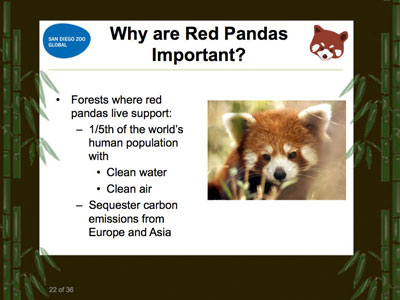 |
Best Practices in Red Panda Management |
1.00 |
In this webinar attendees will learn about best practice husbandry techniques for red panda. The San Diego Zoo has had red pandas since the 1940’s. Nicki Boyd has worked with red panda for 20 years and has put together information on breeding, housing, nutrition, veterinary care, exhibit design, training, and enrichment. The webinar also contains some of the latest information on conservation of red panda in the wild. This webinar will go over the basic best practices from experts in red panda care and shows the San Diego Zoo’s red panda management of this |


























